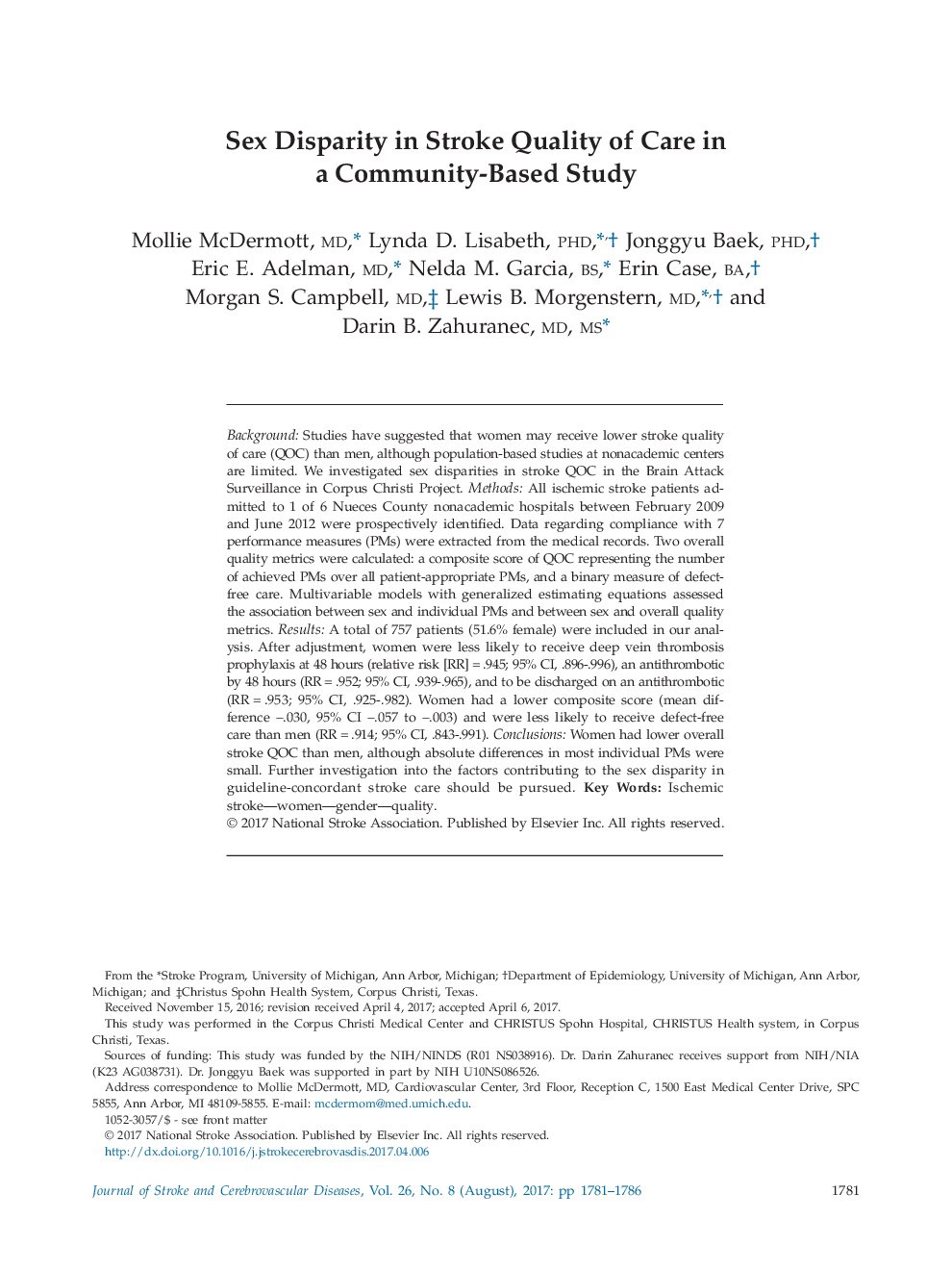| Article ID | Journal | Published Year | Pages | File Type |
|---|---|---|---|---|
| 5574173 | Journal of Stroke and Cerebrovascular Diseases | 2017 | 6 Pages |
BackgroundStudies have suggested that women may receive lower stroke quality of care (QOC) than men, although population-based studies at nonacademic centers are limited. We investigated sex disparities in stroke QOC in the Brain Attack Surveillance in Corpus Christi Project.MethodsAll ischemic stroke patients admitted to 1 of 6 Nueces County nonacademic hospitals between February 2009 and June 2012 were prospectively identified. Data regarding compliance with 7 performance measures (PMs) were extracted from the medical records. Two overall quality metrics were calculated: a composite score of QOC representing the number of achieved PMs over all patient-appropriate PMs, and a binary measure of defect-free care. Multivariable models with generalized estimating equations assessed the association between sex and individual PMs and between sex and overall quality metrics.ResultsA total of 757 patients (51.6% female) were included in our analysis. After adjustment, women were less likely to receive deep vein thrombosis prophylaxis at 48 hours (relative risk [RR]â=â.945; 95% CI, .896-.996), an antithrombotic by 48 hours (RRâ=â.952; 95% CI, .939-.965), and to be discharged on an antithrombotic (RRâ=â.953; 95% CI, .925-.982). Women had a lower composite score (mean difference â.030, 95% CI â.057 to â.003) and were less likely to receive defect-free care than men (RRâ=â.914; 95% CI, .843-.991).ConclusionsWomen had lower overall stroke QOC than men, although absolute differences in most individual PMs were small. Further investigation into the factors contributing to the sex disparity in guideline-concordant stroke care should be pursued.
